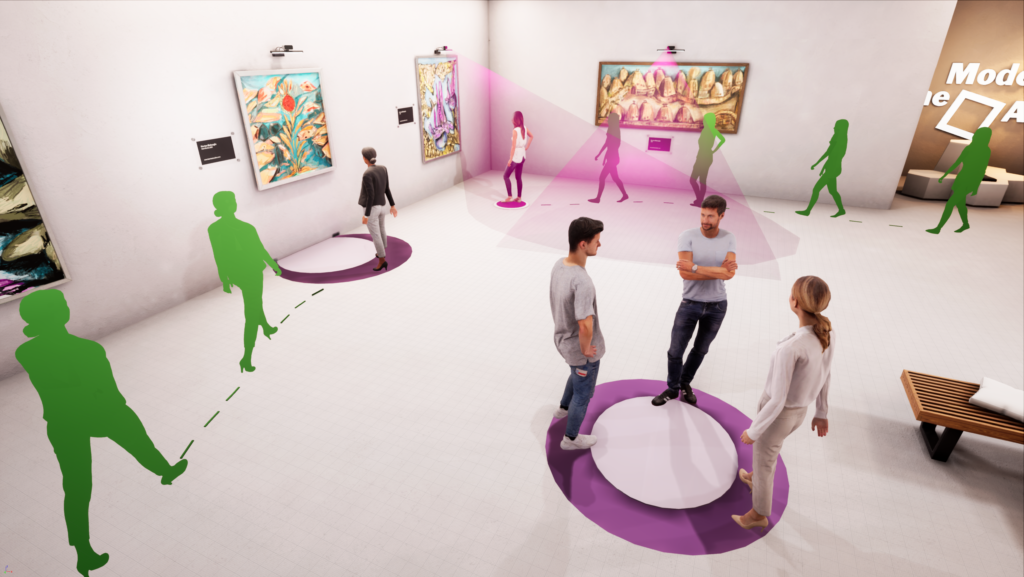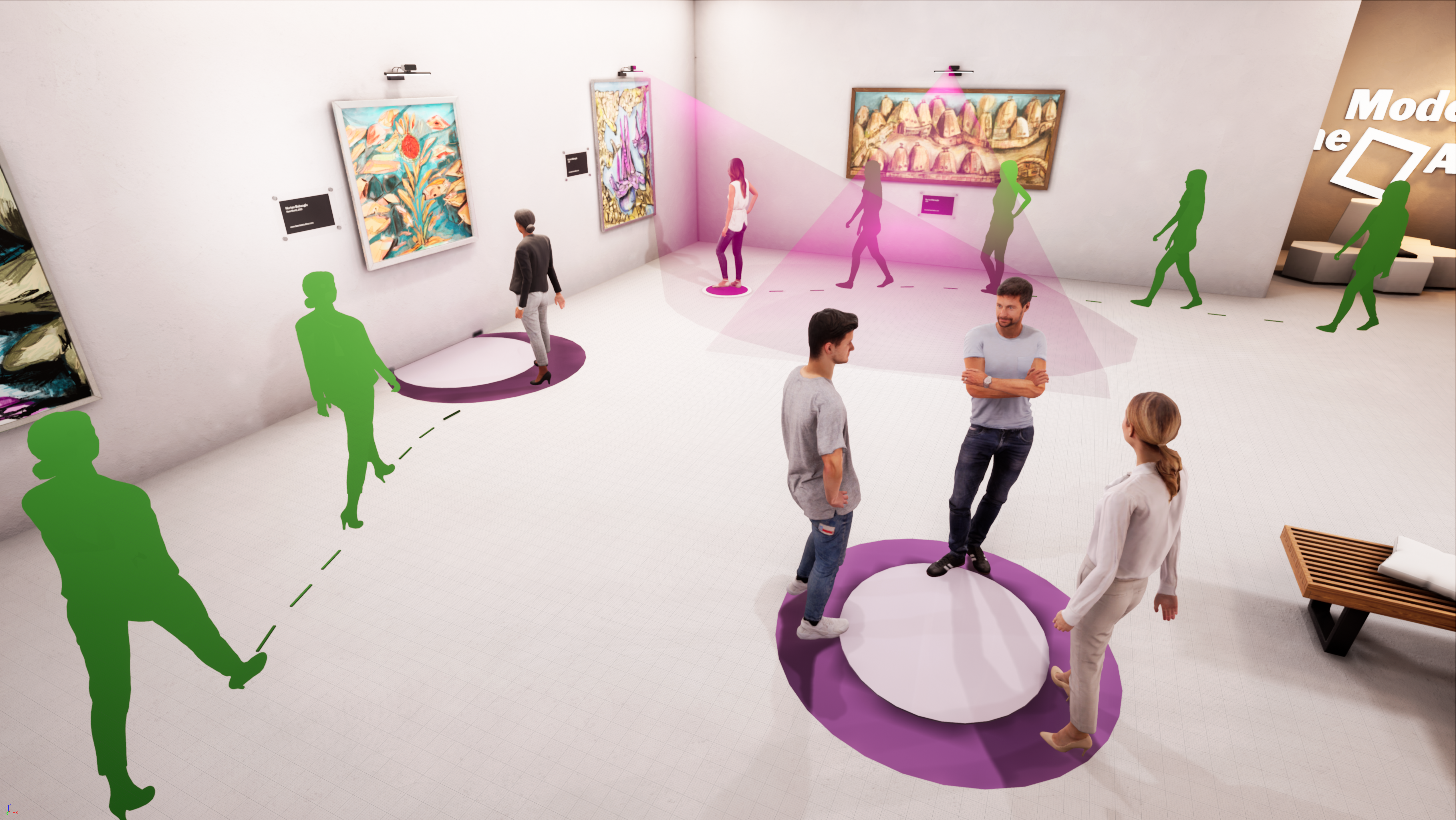
Visitor Behavior in Museums
Social Space versus Physical Space
In probably all disciplines of the Humanities and Social Sciences, there exist two contrasting concepts of space: Space conceived as an external reality that extends homogeneously in three dimensions (hereafter: “physical space”), and space considered as a construction by individuals or social groups that is intimately interwoven with human actions, experiences and sense-making practices occupying the space not physically but solely due to social constructs (hereafter: “social space”).
The Project
With our project we want to explore how this age-old divide. The core problem: In physical space, we can measure the position of objects and people and locate them in a coordinate system. This is not the case with social space. Social spaces resist objective measurements, since they become real only through human (inter-)actions. What is more: The social spaces we are interested in are typically un-occupied from the point of view of physical space. From a physical perspective, an interactional space is essentially a ‘void between people’. Nevertheless, for the social actors this space is real: We can observe that people rather take a detour than cross other people’s interactional space.
Our project aims to uncover the connection lines between the physical and the social space by making social interactions automatically observable through physical measurements. We will use data from depth sensors about body position, pose, facial expression etc. to detect and visualize socially constructed “interactional spaces”. We aim to approach the problem addressing three increasingly complex challenges: (i) starting from the individual dimension by understanding how individual bodies relate to meaningful objects in their surroundings, (ii) we expand the analysis to a group dimension by understanding how a group of people shapes their interactional space, and (iii) finally we aim to capture the interactional dynamics of forming and releasing interactions over time and space with a sensor network.
Our project aims to uncover the connection lines between the physical and the social space by making social interactions automatically observable through physical measurements. We will use data from depth sensors about body position, pose, facial expression etc. to detect and visualize socially constructed “interactional spaces”. We aim to approach the problem addressing three increasingly complex challenges: (i) starting from the individual dimension by understanding how individual bodies relate to meaningful objects in their surroundings, (ii) we expand the analysis to a group dimension by understanding how a group of people shapes their interactional space, and (iii) finally we aim to capture the interactional dynamics of forming and releasing interactions over time and space with a sensor network.

Museum
After having validated our approach in laboratory settings, we will track visitors in museum exhibitions: Museum exhibitions are especially suited to study how people construct interactional spaces as there is a permanent forming and dissolving of groups, focussing joint attention on an exhibit and jointly reorienting to the next exhibit. It is precisely this dynamic flow of multiple interactional spaces in the exhibition space we are interested in. The main contribution of our project is that it exemplarily shows how the fundamental divide between physical and social space can be bridged in a transdisciplinary effort, taking as a particularly telling example the study of interactional spaces in museum exhibitions.

At a glance:
Funding Period 1:
2020-2023
own funding
